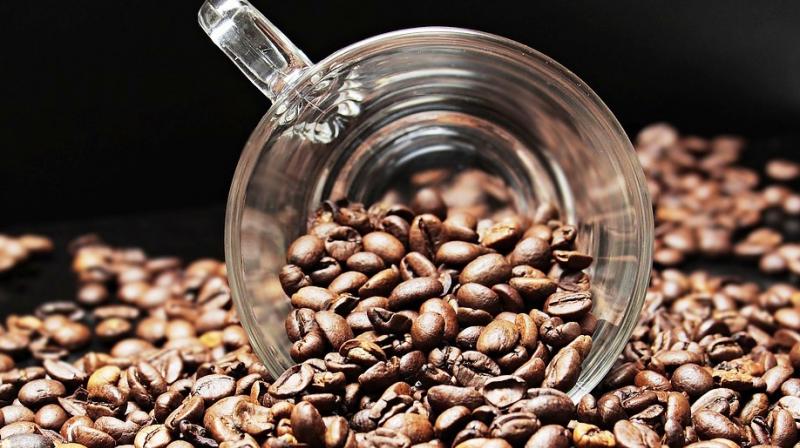5 more years to clear muddy smell from Araku Valley Coffee
Drying coffee seeds on mud floors takes off its aroma, farmers told to build drying yards.

Visakhapatnam: The Araku Valley Coffee is undeniably one of the best coffees in the world. Its special aroma and the traditional organic farming techniques used to cultivate it make it very special. However, the foremost problem for the coffee at this point is the muddy smell that is damaging its aroma. The officials are expecting that the setback may continue for another 5 years.
The muddy smell comes from drying the coffee cherries and beans on mud floors. Though the Integrated Tribal Development Agency(ITDA) and Coffee Board are constructing cement drying yards, the numbers are not meeting the demand. Therefore, many farmers are still drying coffee on mud floors. Consequently, what is being supplied to buyers is a mix of the cement floor dried coffee and mud floor dried coffee as a result of which, cement drying will continue to remain useless unless all the beans are dried on cement.
The ITDA project officer of Paderu Mr D.K. Balaji said, “There is certainly a likelihood of the muddy smell being present if coffee cherries and beans are being dried on mud floors. To overcome this, the Coffee Board has so far extended 50 per cent subsidy towards the construction of 12,000 cement drying yards, which cover about 24,000 acres, since 2009. The Coffee Board has been providing subsidy for 600 cement drying yards every year, and the construction of these yards is an ongoing activity.”
“The ITDA has provided 100 percent subsidy for 10,000 cement drying yards to the Particularly Vulnerable Tribal Group(PVTG) farmers on saturation mode, covering an area of 20,000 acres. The Coffee Board and ITDA together have constructed 22,000 drying yards so far, which cover 44,000 acres out of the total yielding garden area of 1,10,000 acres approximately. The ITDA and the Coffee Board are planning to provide drying yards in a phased manner for the remaining coffee areas,” Mr Balaji said.
The muddy smell in Araku Coffee has been reported several times by the Indian Coffee Trade Association upon inspection of its cup quality.
However, to overcome this problem, a number of farmers are constructing their own drying yards, and the ITDA is also providing tarpaulins.
As the Coffee Board is providing subsidy for 600 cement drying yards every year, it may take another 22 years to meet the demand.
However, officials are expecting the private drying yards and tarpaulins to help them come out of this crisis in another 5 to 6 years. An official from ITDA on condition of anonymity said, “The ITDA can only support the construction of the drying yards based on the availability of funds. We are working hard to improve the situation by proving tarpaulins and encouraging farmers to construct on their own drying yards. We believe it may take another five years to clear the muddy smell from Araku Coffee.”
Araku Coffee rated 5 on a scale of 10
Due to a lack of awareness among farmers, the cup quality of Araku Coffee has been declared average with a rating of 5 on a scale of 10.
Farmers have been harvesting ripened coffee cherries along with the over-ripe and immature ones, which has been disturbing the taste and aroma of the original Araku coffee.
The Girijan Co-operative Corporation(GCC), which purchases more than 1000 metric tons of coffee beans from the Araku region, conducted a cup quality test with the Indian Coffee Trade Association and found its taste to be average.
A senior official from GCC said, “On a scale of 10, Araku Coffee has scored only 5 points, and there are two factors behind it — the muddy smell and the use of immature beans.”
Cup quality of cherry coffee, which is a mix of immature and mature fruits that are sun-dried without pulping, will be poor compared to the cup quality of parchment coffee, which is a mix of ripened fruits harvested, pulped in the machine, and dried at the desired moisture level. Farmers prefer to produce cherry coffee because it is not as labour intensive and requires minimum skill and no machinery.
Further, there is not much difference between the prices of cherry coffee and parchment coffee. As a result, as farmers receive no extra financial benefit from producing parchment coffee, they are not very bothered about the cup quality of the coffee.
In an exclusive interview with the this newspaper, Assistant Director, Coffee, ITDA(Paderu), Mr V. Radha Krishna said, “Araku Coffee does not represent the coffee grown in all the 11 Mandals of the Paderu agency area. The cup quality of the coffee grown in the Araku region is different from that of the Paderu and Chintapalli regions. Additionally, the quality of coffee grown under natural forest shade is far superior compared to the quality of coffee grown in mono-shade under the silver oak tree. Further, the cup quality of any coffee depends on the different methods used during processing.”
“I would like to emphasize that cup quality cannot remain constant and varies from area to area and from bulk to bulk. Therefore, the 5-out-of-10 rating for Araku coffee should not be considered as a permanent evaluation. Our agency farmers have won many coffee fine cup awards for superior qualities of produce.”
“We conduct 6 training sessions per month in every Mandal and ask farmers to pick up the beans in four different stages. With the awareness programs, farmers are also learning about the benefits of producing parchment coffee i.e. if they produce more parchment coffee, then the prices of the same could increase and consequently, they could earn huge amounts of money.”
